Silica is the major ingredient in virtually all types of glass. The principal glass products include containers (bottles and jars), flat glass (windows, mirrors, vehicle glazing etc.), lighting glass (light bulbs, fluorescent tubes, etc.), tableware (lead crystal, drinking glasses etc.), TV tubes and screens, decorative glass, fibreglass, optical glass and vacuum flasks.

Silica has a high melting point, 1610 degrees C. This enables castings to be produced by pouring molten metal into moulds made out of silica sand.
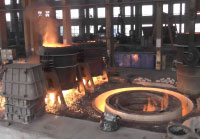
Silica that has been ground to fine size is an ingredient of most clay bodies and is a major constituent of ceramic glazes. Typical everyday products include tableware, sanitaryware, ornaments and wall and floor tiles.

Closely sized grades of silica sand is the principal filtration medium used by the water industry to extract solids from wastewater.

The construction industry is founded on silica and there are a host of specialist applications including silica and aerated concrete blocks, floor and roof tiles, flooring and rendering compounds, white line markings, roofing felt and cement and resin injection systems.

Silica sand is used for equestrian surfaces, in artificial turf, golf course root zones and dressings, football and cricket and other pitches and as play sands.

Silica has many other applications including the manufacture of chemicals and metals, fillers in numerous products, plastic and otherwise, the manufacture of refractories, stimulating oil production and as additives in agricultural and horticultural products. It is difficult to imagine a life without silica!

Silica Sand is quartz that over time, through the work of water and wind, has been broken down into tiny granules.Commercial Silica Sand is widely used as a proppant by companies involved in oil and natural gas recovery in conventional and unconventional resource plays. The resource is also used in industrial processing to make everyday items such as glass, construction materials, personal care products, electronics, and even renewable materials.
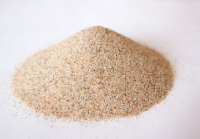
Industrial sand is an essential part of the ferrous and non-ferrous foundry industry. Metal parts ranging from engine blocks to sink faucets are cast in a sand and clay mold to produce the external shape, with a resin bonded core creating the desired internal shape. Silica’s high fusion point (1760°C) and low rate of thermal expansion produce stable cores and molds compatible with all pouring temperatures and alloy systems. Its chemical purity also helps prevent interaction with catalysts or curing rate of chemical binders. Following the casting process, core sand can be thermally or mechanically recycled to produce new cores or molds.
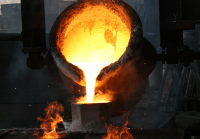
Industrial sand plays a critical role in the production of a wide variety of ferrous and non-ferrous metals. In metal production, silica sand operates as a flux to lower the melting point and viscosity of the slags to make them more reactive and efficient. Lump silica is used either alone or in conjunction with lime to achieve the desired base/acid ratio required for purification. These base metals can be further refined and modified with other ingredients to achieve specific properties such as high strength, corrosion resistance, or electrical conductivity. Ferroalloys are essential to specialty steel production, and industrial sand is used by the steel and foundry industries for de-oxidation and grain refinement.

Silicon-based chemicals are the foundation of thousands of everyday applications ranging from food processing to soap and dye production. In this case, SiO2 is reduced to silicon metal by coke in an arc furnace, to produce the Si precursor of other chemical processes. Industrial sand is the main component in chemicals such as sodium silicate, silicon tetrachloride, and silicon gels. These chemicals are used to produce household and industrial cleaners, to manufacture fiber optics, and to remove impurities from cooking oil and brewed beverages.

Industrial sand is the primary structural component in a wide variety of building and construction products. Whole grain silica is put to use in flooring compounds, mortars, specialty cements, stucco, roofing shingles, skid resistant surfaces, and asphalt mixtures to provide packing density and flexural strength without adversely affecting the chemical properties of the binding system. Ground silica performs as a functional extender to add durability and anti-corrosion and weathering properties in epoxy-based compounds, sealants, and caulks.

Paint formulators select micron-sized industrial sands to improve the appearance and durability of architectural and industrial paint and coatings. High purity silica contributes critical performance properties such as brightness and reflectance, colour consistency, and oil absorption. In architectural paints, silica fillers improve tint retention, durability, and resistance to dirt, mildew, cracking, and weathering. Low oil absorption allows increased pigment loading for improved finish colour. In marine and maintenance coatings, the durability of silica imparts excellent abrasion and corrosion resistance.

Ground silica is an essential component of the glaze and body formulations of all types of ceramic products, including tableware, sanitary ware, and floor and wall tile. In the ceramic body, silica is the skeletal structure upon which clays and flux components attach. The SiO2 contribution is used to modify thermal expansion, regulate drying and shrinkage, and improve structural integrity and appearance. Silica products are also used as the primary aggregate in both shape and monolithic type refractories to provide high temperature resistance to acidic attack in industrial furnaces.
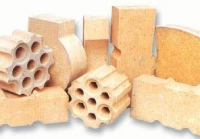
Industrial sand is used in the filtration of drinking water, the processing of wastewater, and the production of water from wells. Uniform grain shapes and grain size distributions produce efficient filtration bed operation in removal of contaminants in both potable water and wastewater. Chemically inert, silica will not degrade or react when it comes in contact with acids, contaminants, volatile organics, or solvents. Silica gravel is used as packing material in deep-water wells to increase yield from the aquifer by expanding the permeable zone around the well screen and preventing the infiltration of fine particles from the formation.
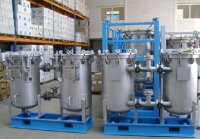
Industrial sand even finds its way into sports and recreation. Silica sand is used for golf course bunkers and greens as well as the construction of natural or synthetic athletic fields. In golf and sports turf applications, silica sand is the structural component of an inert, uncontaminated growing media. Silica sand is also used to repair greens and to facilitate everyday maintenance like root aeration and fertilization. The natural grain shape and controlled particle size distribution of silica provides the required permeability and compaction properties for drainage, healthy plant growth, and stability.

Known commonly as proppant, or “frac sand,” industrial sand is pumped down holes in deep well applications to prop open rock fissures and increase the flow rate of natural gas or oil. In this specialized application, round, whole grain deposits are used to maximize permeability and prevent formation cuttings from entering the well bore. Silica’s hardness and its overall structural integrity combine to deliver the required crush resistance of the high pressures present in wells up to 2,450 metres deep. Its chemical purity is required to resist chemical attack in corrosive environments.
